02. The Human Body
 Self Study
Self Study
Prepared by: learnloophq@gmail.com
Last edited 37 days ago by Learn LoopHQ.
Chapter: 02. The Human Body
The Human Body: An Amazing Machine
Our body is an incredible machine that can perform many different functions. It helps us understand the world around us and respond to it. Our body even has the ability to repair itself! Because it’s so important, we must take good care of our bodies.
We use our five sense organs—eyes, ears, nose, tongue, and skin—to see and understand the world. Besides these sense organs, our body has many other organs that work together in groups called organ systems. While sense organs help us interact with our surroundings, organ systems perform various internal functions.

Body Organization: From Cells to Systems
All the organs in our body are made up of tiny building blocks called cells. A cell is the smallest unit of our body.


Examples of organ systems in the human body include the respiratory system, skeletal system, muscular system, digestive system, circulatory system, and excretory system.
Internal Organs
Our body is made up of bones and muscles, which are covered by the skin. Bones are hard, while muscles are soft.

Bones
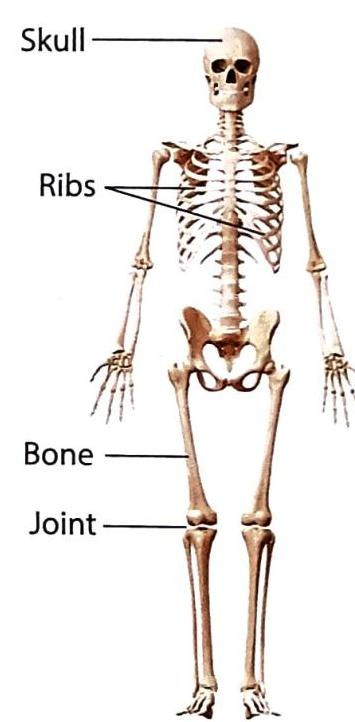


Muscles
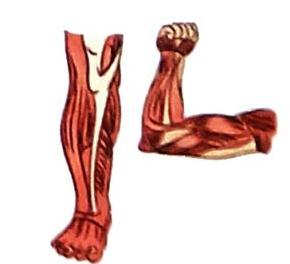


Brain
Heart
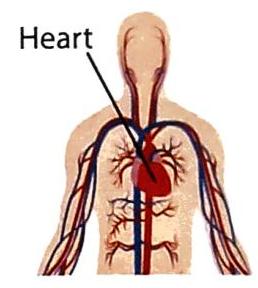


Kidneys


Stomach and Intestines
The food we eat provides us energy. But before it provides energy, food needs to be further broken down and absorbed by the body. This process of breaking down food and absorbing it is known as digestion. The organs that help the food break down form the digestive system.




Respiratory System
We breathe in air to live. We take in air through our nose. The air then travels down the windpipe into the lungs. After the air reaches the lungs, we need to breathe out.


How Lungs Work
The lungs are two sponge-like, cone-shaped structures that fill most of the chest cavity. Their essential function is to provide oxygen from inhaled air to the bloodstream and to exhale carbon dioxide. Below the lungs is a muscle called the diaphragm.
This mechanism can be understood by imagining a sealed bottle with a balloon inside attached to a straw. When you pull down a flexible sheet covering the bottom of the bottle (like the diaphragm), the balloon inside inflates because air rushes in through the straw. When you release the sheet, the balloon deflates as air is pushed out.




Deep Breathing
Deep breathing is a simple breathing exercise that helps in the complete exchange of gases in your lungs. It is done by contracting the diaphragm effectively. In this type of breathing, the air enters the lungs fully, and the belly expands.
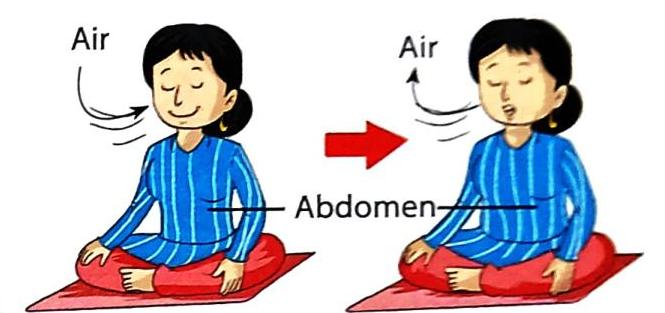



Air Pollution
We all know we need food, air, and water to survive. We cannot live without air for even a few minutes, which shows how important clean air is.
What is Air Pollution?
Air pollution occurs when unwanted and harmful gases, dust particles, fumes, or odour are introduced into the atmosphere in a way that makes the air harmful for humans, animals, and plants.
Causes of Air Pollution
Air pollution is caused by various human activities:
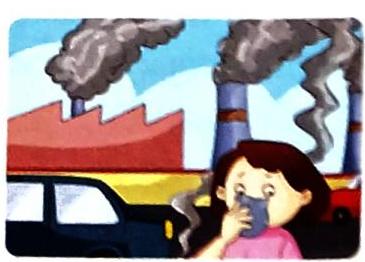

Effects of Air Pollution


Key Terms
Chapter Summary
The human body is a complex and amazing machine. It is organized in levels, starting from the smallest units called cells, which form tissues, then organs, then organ systems, and finally, a complete organism. Our body uses five sense organs (eyes, ears, nose, tongue, skin) to understand the world.
Internally, essential organs like bones and muscles provide structure and movement. Bones form the hard skeleton, protecting vital organs and allowing us to stand and move. Muscles, which are soft, work with bones to create motion. Other crucial internal organs include the brain (for thinking and control), the heart (for pumping blood), kidneys (for waste removal), and the stomach and intestines (for digesting food and absorbing nutrients).
The respiratory system, comprising the nose, windpipe, and lungs, enables us to breathe. Breathing involves inhalation (taking in oxygen) and exhalation (giving out carbon dioxide), with the diaphragm playing a key role in lung expansion and contraction. Deep breathing exercises can enhance lung health.
However, the air we breathe can be harmed by human activities leading to air pollution from industrial smoke, burning garbage, and car exhausts. Air pollution has serious health consequences, affecting breathing and causing various diseases, and can also damage the ozone layer. Understanding these systems and threats helps us appreciate our body and the environment.


Want to print your doc?
This is not the way.
This is not the way.

Try clicking the ⋯ next to your doc name or using a keyboard shortcut (
CtrlP
) instead.